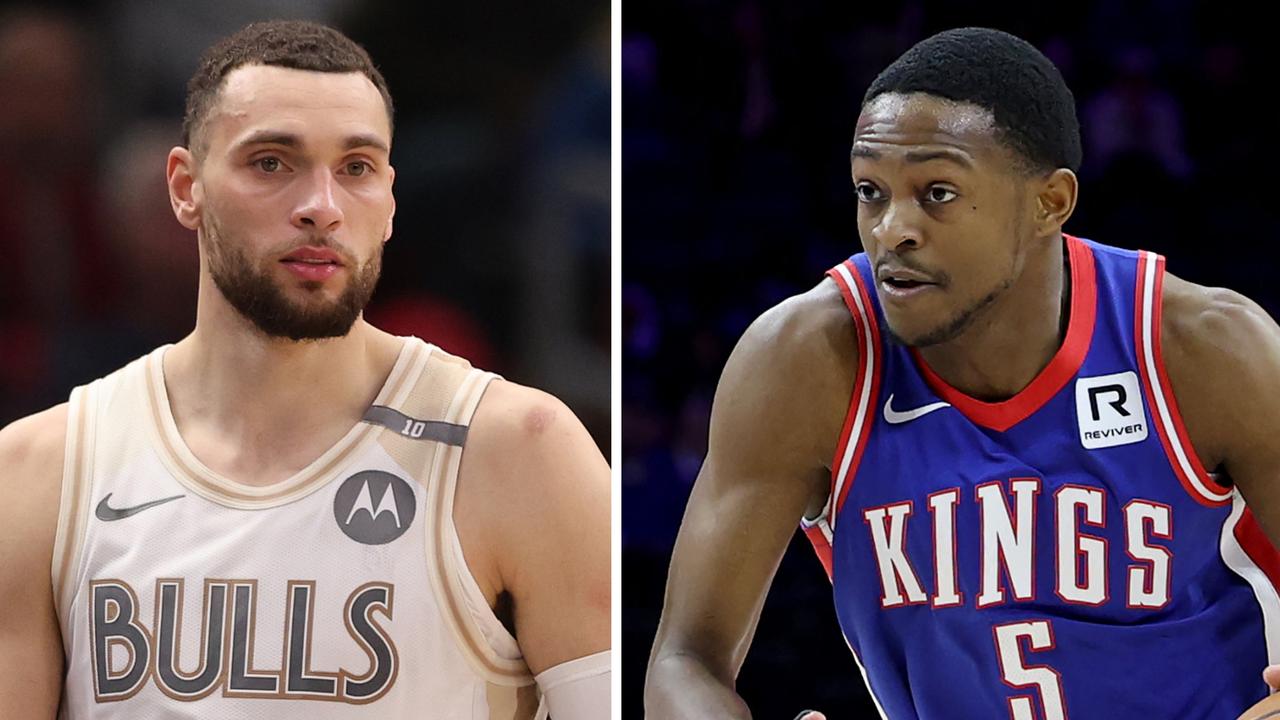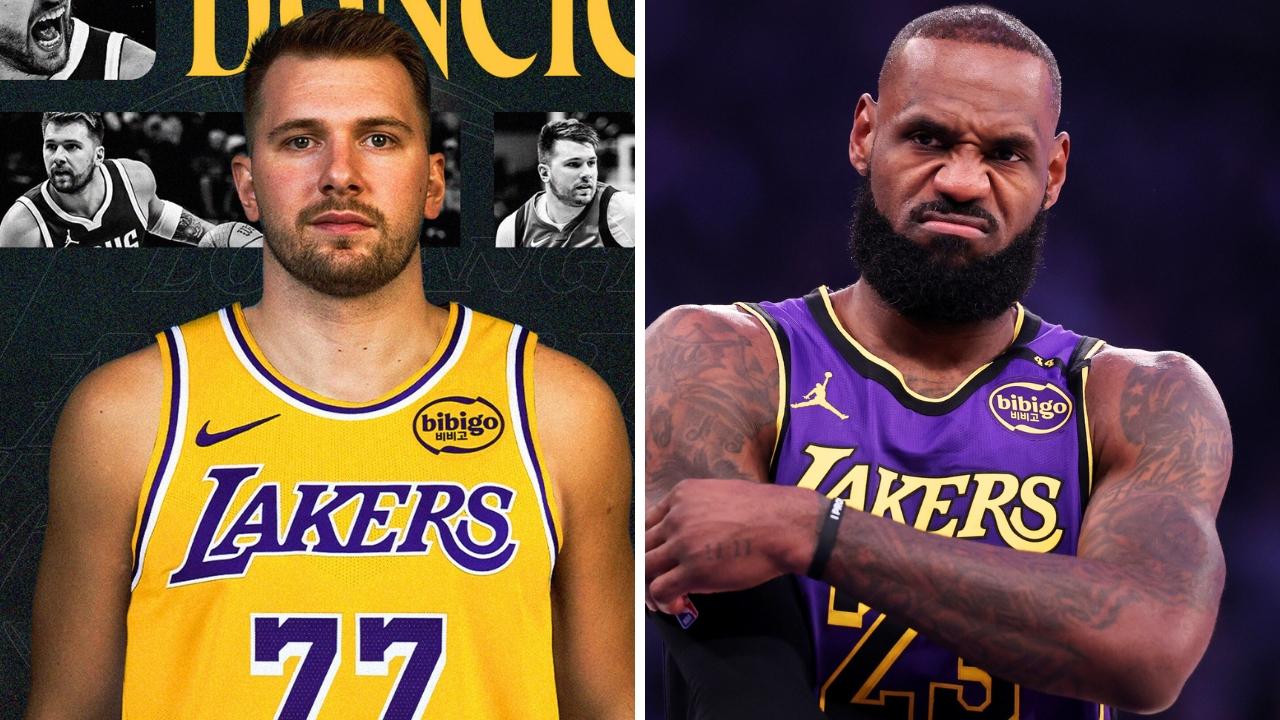Netflix docu-series Cheer shines a light on how far cheerleaders need to push themselves
Cheerleading looks like a glamorous and desirable gig, but the reality of those who reach the top is far darker than many can imagine.
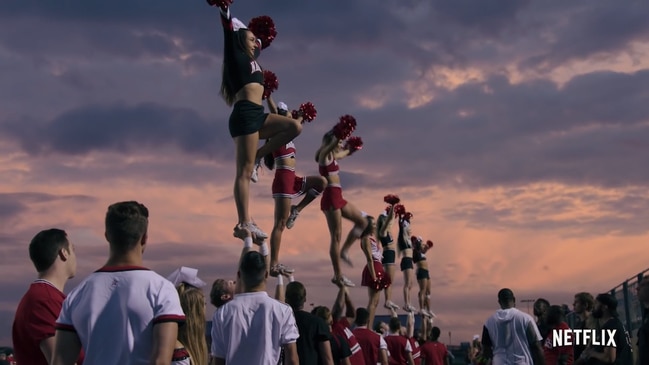
Cheerleaders have long been haunted by false stereotypes, with countless movies and TV shows depicting them as popular, skinny girls with bleached blonde hair, tanned bodies and a footballer boyfriend.
But the reality is much darker, with many enduring excruciating pain, sexual harassment and body-shaming, The Sun reports.
New Netflix docu-series Cheer has shone a light on the tough world by following one of America’s top performing college teams as they prepare for the 2019 National Cheerleaders Association’s (NCA) National Championships.
From kids battling their own personal hell at home, to girls coping with agonising pain and risking broken bones just so they won’t let their coach down, it’s a gripping insight into the shockingly resilient lives of America’s cheerleaders.
It’s become an instant hit and has even encouraged cheerleaders from across the world to speak out and share their own horrendous experiences of taking part in the sport.
While one former cheerleader has recalled fighting through the pain of a sprained wrist — while watching teammates turn up on crutches with torn tendons — more have claimed they’ve been subjected to groping, humiliating fat-shaming and terrible pay.
Given the Super Bowl is on today, here’s a look inside the hidden world of America’s team cheerleading.
‘MADE TO FEEL LIKE ESCORTS’
In April 2018, a series of current and former cheerleaders in the NFL and NBA sensationally claimed it was “part of the job” to be groped and sexually harassed by fans.
One former cheerleader for the Dallas Cowboys — who was forced to sign a nondisclosure agreement — recalled an incident when her squad walked past a group of Philadelphia Eagles fans.
She told the New York Times: “We were walking by, waving and smiling, and one guy caught my eye. He looked at me and said, ‘I hope you get raped!’ That’s the kind of stuff we’d have yelled at us.”
According to the news outlet, some cheerleaders alleged that the Dallas Cowboys even taught their team what to say if they were touched inappropriately.
“We were taught, if someone’s getting handsy on you, how to navigate that,” a former longtime Cowboys cheerleader said.
“We were told what to say, like, ‘That’s not very nice’. To be sweet, not rude.”
Meanwhile, a former cheerleader for the Washington Redskins recalled one incident when she, along with six other girls, were made to feel like escorts after being sent to a fan’s home for the afternoon.
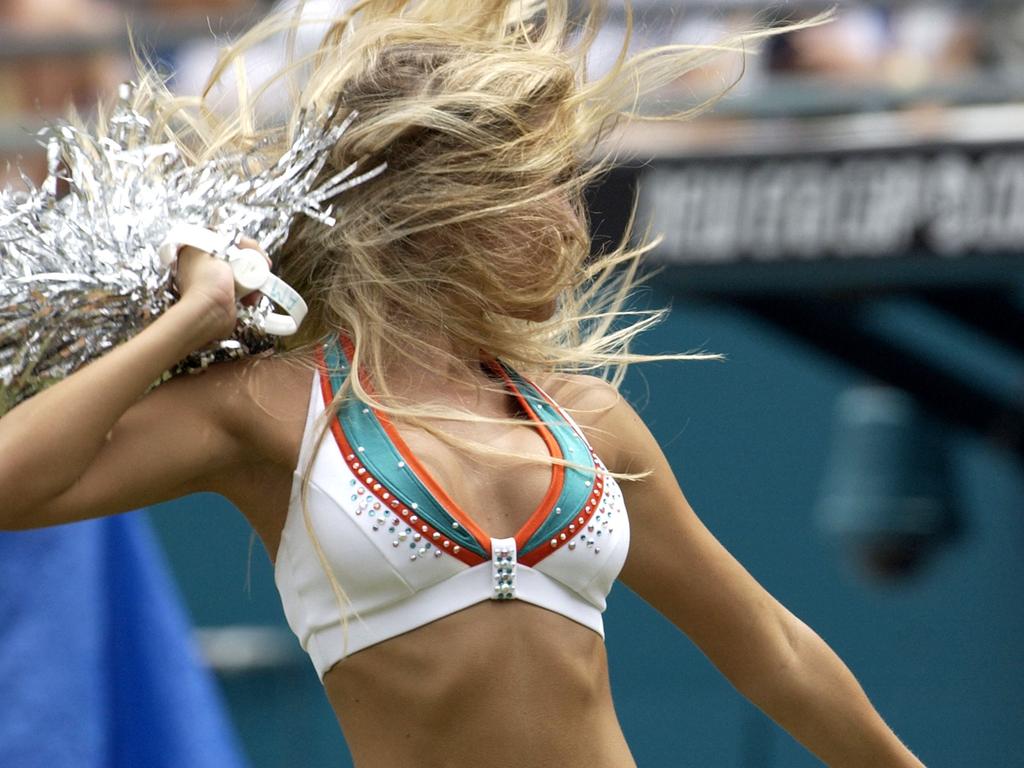
One of the squad commented to the Times: “It’s literally like you’re calling for an escort. It’s not like somebody grabbed my boobs, and nobody told me, ‘Have sex with me right now’. It’s a lot more nuanced.”
A spokesperson for American football’s governing body said at the time: “The NFL and all NFL member clubs support fair employment practices.
“Employees and associates of the NFL have the right to work in a positive and respectful environment that is free from any and all forms of harassment.”
While a spokesperson for the NBA said: “Team dancers are valued members of the NBA family and, as for all employees, we work with our teams to ensure they’re provided safe, respectful and welcoming workplaces.”
FIGHTING THROUGH EXCRUCIATING PAIN
While many sporting stars go the extra mile to stay at the top of their game, often pushing themselves despite potential injuries, docu-series Cheer has revealed some cheerleaders are prepared to go that step too far.
The series follows teammates at Navarro College, a small junior college in Corsicana, Texas, as they battle to remain champions.
One of them is Morgan Simianer, one of the team’s top flyers, who continues competing despite battling rib injuries.
Cameras follow her as she visits an emergency room and is warned she could risk cracking her ribs and potentially puncturing her lungs if she keeps competing — but she ignores the advice amid fears of letting her coach down.
More scenes show one teammate dislocate her elbow after landing awkwardly on the ground, while more endure multiple concussions and gruelling ice baths in the name of perfection.
The risk of injury in the sport is huge, and according to the American Academy of Paediatrics (AAP), cheerleading caused 65 per cent of all catastrophic injuries in female high school athletes and around 71 per cent in college women between 1982 and 2009.
‘BODY-SHAMING’ AND ‘JIGGLE TESTS’
While Cheer shows coach Monica Aldama encouraging her team to eat and get their strength up within the first half an hour — a positive and healthy message to send from the start — it’s sadly not been the case for every team across America in the past, at least according to some cheerleaders.
Former NFL cheerleader Angelina Rosa previously claimed she was duct-taped into her uniform and labelled “skinny-fat” by her coach.
It was revealed in 2018 that she was suing her football team for unfair treatment after being “body-shamed” and “belittled” by the Houston Texans squad leader.
Speaking at a press conference in New York at the time, Angelina said: “On numerous occasions I was belittled and body shamed.
“I was described and called out with the term ‘skinny fat’.”
She went on to describe an alleged incident where she claimed she was painfully duct-taped into her uniform, prompting her to starve herself and survive on just popcorn and water.
Angelina was speaking out as part of a lawsuit brought by her fellow teammates Hannah Turnbow, Ainsley Parish, Morgan Wiederhold, Ashley Rodriguez, and Kelly Neuner. They ultimately accused their director of body-shaming tactics.
The lawsuits were eventually dropped, according to the Houston Chronicle, and submitted to binding arbitration. The cheerleaders’ lawyers later confirmed the cases were resolved in private but details of the outcome were confidential.
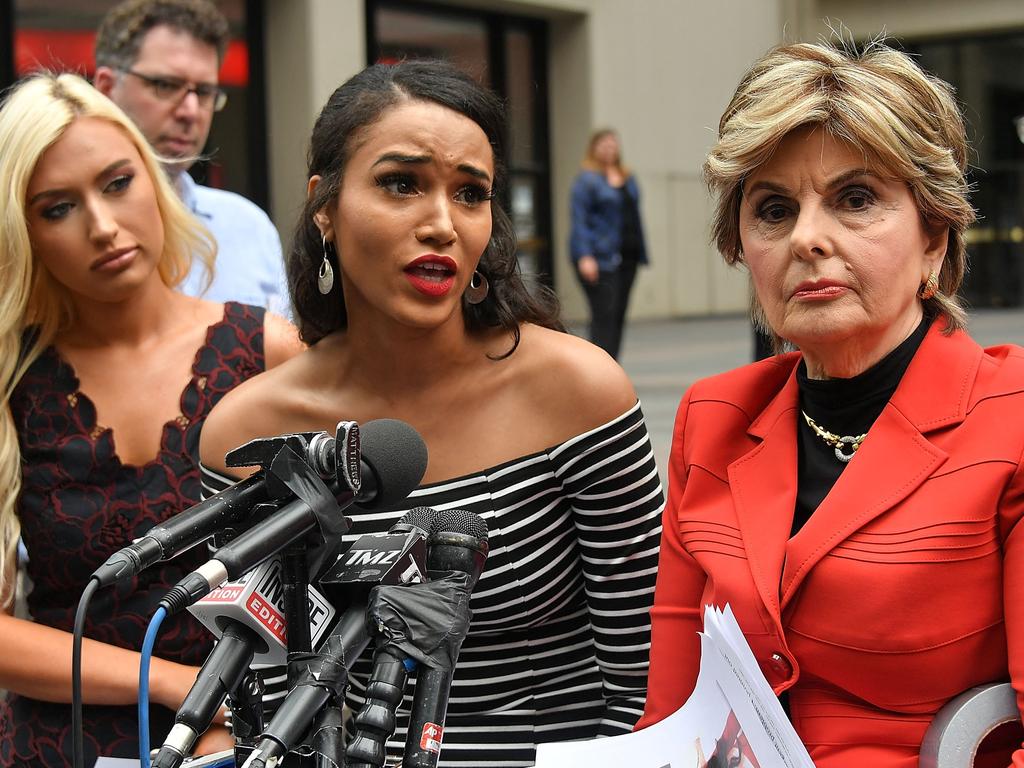
Sadly it doesn’t stop with the NFL. Former NBA cheerleader Lauren Herington — who danced for the Milwaukee Bucks from 2013 to 2014 — has previously spoken out with her own allegations of body shaming, telling Yahoo Lifestyle: “My coach would make me sit in (a broom closet) before games and think about if I was doing everything to be able to lose weight.”
She claimed her coach would ask her to wear spandex before performing a “jiggle test” in front of the team.
“She’d come up and grab underneath my butt or the side of my belly,” Lauren told the news outlet. “She’d be like, ‘Lose 5 pounds by tomorrow, and you’ll be fine’.”
The Bucks later told Yahoo that they take all of the allegations “very seriously” but “have found no evidence to support these claims”.
‘TERRIBLE PAY’
There have been a number of lawsuits filed in the States regarding NFL cheerleaders’ pay in previous years, with one Oakland Raiders cheerleader suing the team over claims she was paid less than $5 an hour.
The claims were part of a major lawsuit against the Raiders — brought by cheerleaders named in the media as Lacy T. and Sarah G. — which resulted in an $AUD1.87 million settlement, according to the LA Times.
It was reportedly agreed that cheerleaders on the team would receive $3700 in back pay and penalties for the 2013-14 season, plus $9000 in back pay and penalties for each of the three seasons before that.
While Herington previously made body-shaming claims against her team the Milwaukee Bucks, she also brought a class-action lawsuit against the team in 2015 for unfair pay.
She claimed, after covering costs of required beauty treatments, her teammates were effectively paid as little as $AUD4.50-$6.
While the Bucks initially denied the claims, they eventually agreed to settle and paid around $370,000 in lost wages to around 40 dancers, according to multiple reports at the time.
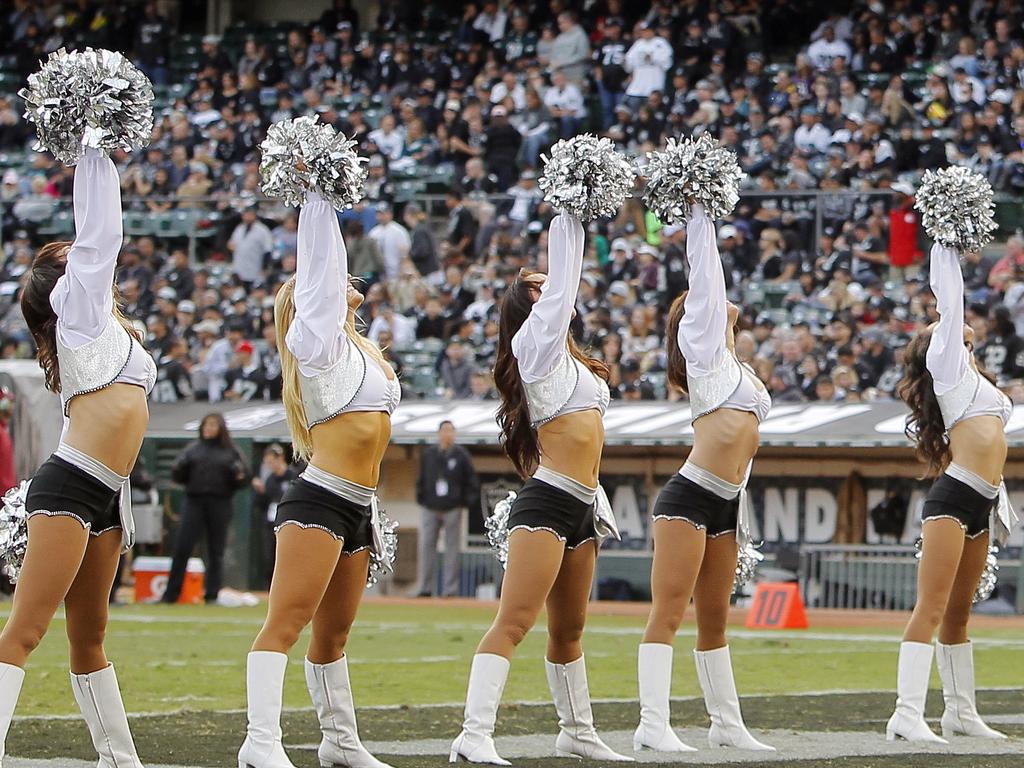
Netflix’s Cheer focuses more on the brutal practices America’s cheerleaders have to face. However, a writer for The Atlantic, Amanda Mull, previously stated in an opinion piece on the TV series that it also highlights “one of the oldest, darkest stories in American sports — of athletes with no pay and little support breaking their bodies again and again, all for the greater glory of an authority figure they dare not question”.
Now, with the world’s eyes on cheerleading at its very finest for the Super Bowl, plus the huge success of Cheer, the brutal reality of NFL and other American cheerleading has never been more in the spotlight.
It no doubt sparks hopes that there will be further, positive changes for America’s hard-working cheerleaders in the future.
This article originally appeared on The Sun and was reproduced with permission

